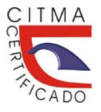Photovoltaic solar pumping: a technology for rural community development
DOI:
https://doi.org/10.5281/zenodo.15000469Keywords:
maintenance, photovoltaic panel, sustainability, trainingAbstract
Introduction: photovoltaic solar pumping is a viable and sustainable technological solution for water supply in rural and remote communities. This technology allows solar energy to be converted into electricity to power pumps that extract and distribute water. Objective: analyze photovoltaic solar pumping technology as a viable and sustainable technological solution for water supply in rural and remote communities around the world. Method: the research uses the qualitative paradigm based on theoretical level methods such as analytical-synthetic, historical-logical and inductive-deductive; as well as the empirical method of documentary analysis. Results: the analysis of the topic allows us to assert that the use of this type of system based on a renewable energy source contributes to the independence of the National Electroenergy System and to significantly reduce maintenance costs; although its limitations are related to the dependence on solar radiation, the high initial cost and the need for trained personnel. Successful implementation requires an adequate design, considering the demand and availability of water, the sizing of the equipment and the integration with storage and distribution systems. Conclusion: various case studies have demonstrated the benefits of solar photovoltaic pumping technology in rural communities, improving food security, quality of life and the environment. Long-term sustainability depends on socioeconomic and management aspects such as community participation and operator training.
Downloads
References
Aguay Saquicaray, D. C. (2024). Evaluación de la eficiencia energética de sistemas de energía solar fotovoltaica en diferentes condiciones climáticas. MQRInvestigar, 8(3), 4993-5016.
Alata Rey, J. E., Zingg Rosell, A. F., Orellana Pardave, J. A. y Altamirano Chunga, L. A. (2023). La energía solar fotovoltaica en los sistemas de bombeo para acueductos: una revisión sistemática. Revista Científica INGENIAR: Ingeniería, Tecnología e Investigación, 6(12), 257-269.
Bautista Alcantara, R. E., Espinoza Canaza, F., Barrena Gurbillón, M. A. y Gosgot Angeles, W. (2022). Rendimiento de sistema fotovoltaico autónomo de 500 Wp bajo las condiciones climáticas de Chachapoyas, Amazonas. Revista de Investigación de Agroproducción Sustentable, 6(1), 57-65.
Beltran Perez, Y., Brown Manrique, O. B., Mendez Jurjo, N. y Álvarez Sevilla, I. (2024). Modeling of solar radiation for the photovoltaic pumping system in sprinkler irrigation. Revista Ciencias Técnicas Agropecuarias, 33(4), 1-5.
Chandel, S. S., Nagaraju Naik, M. y Chandel, R. (2015). Review of solar photovoltaic water pumping system technology for irrigation and community drinking water supplies. Renewable and Sustainable Energy Reviews, 49, 1084-1099.
Chiluiza Briones, V. H. y Bravo Contreras, J. A. (2023). Implementación de un sistema fotovoltaico para abastecer de energía a un sector rural del Golfo de Guayaquil mediante el análisis de carga y simulación por software. Polo del Conocimiento: Revista científico profesional, 8(2), 1647-1679.
Gopal, C., Mohanraj, M., Chandramohan, P. y Chandrasekar, P. (2013). Renewable energy source water pumping systems-A literature review. Renewable and Sustainable Energy Reviews, 25, 351-370.
Karekezi, S. y Kithyoma, W. (2002). Renewable energy strategies for rural Africa: is a PV-led renewable energy strategy the right approach for providing modern energy to the rural poor of sub-Saharan Africa? Energy Policy, 30(11-12), 1071-1086.
Oficina Nacional de Estadística e Información [ONEI]. (2020). Anuario Estadístico de Cuba 2019, Capítulo 16: Energía y Combustibles. Oficina Nacional de Estadística e Información.
Ortiz, T. H. (2022). Diseño e implementación de un captador solar tipo CPC para desinfección de agua aplicado a comunidades rurales [Tesis de doctorado, Universidad Autónoma del Estado de Morelos]. http://www.riaa.uaem.mx/xmlui/handle/20.500.12055/2929
Pérez Gutiérrez, R. (2024). San Narciso, por un desarrollo local con apoyo de las fuentes renovables de energía. TERRA: Revista de Desarrollo Local, (14), 120-136.
Pérez Gutiérrez, R., Echevarría Gómez, M. C., Medina Echevarría, A., Barrera Cardoso, E. L. y Núñez Jover, J. (2021). Las fuentes renovables de energía en tres comunidades rurales de Cuba. Límites y oportunidades. Revista Universidad y Sociedad, 13(6), 109-122.
Phiri, E., Rowley, P. N., y Blanchard, R. E. (2023). Addressing Challenges in Delivering Sustainable Rural Water Provision Using Solar Water Pumping in Malawi: A Stakeholder Analysis. Energies, 16(23), 7758. https://doi.org/10.3390/en16237758
Posada Hortelano, G. (2023). Abastecimiento de agua y energía en la rehabilitación de dos canales de riego en Iringa, Tanzania [Tesis de Maestría, Universidad Politecnica de Madrid]. https://oa.upm.es/74809/3/TFM_Posada_Hortelano_Gonzalo.pdf
Purohit, P., y Purohit, N. (2010). Techno-economic evaluation of concentrating solar power generation in India. Energy Policy, 38(6), 3015-3029.
Salamanca Falla, C. H., Babativa Torres, J. S., y Bahamon Sáenz, A. D. (2024). Viabilidad económica de los sistemas agrivoltaicos en Colombia. Semestre Económico, 27(62), 1-20.
Simbaña Tejada, G. A., Cedeño, J., Torre, S. de la y Fonseca, R. (2024). Sistema de Riego por Goteo para Invernaderos Utilizando Energía Fotovoltaica. Revista Ingeniería e Innovación del Futuro, 3(2), 52-66. https://editorialscientificfuture.com/index.php/riif/article/view/78/204
Valverde Granja, A., Vargas Galván, G. A., García Arboleda, M. y Díaz Figueroa, J. E. (2022). Impacto de la implementation del sistema de riego con energía solar en cultivos de limón. Revista Logos Ciencia & Tecnología, 14(2), 90-107.
Downloads
Published
How to Cite
Issue
Section
License
Copyright (c) 2025 Universidad & ciencia

This work is licensed under a Creative Commons Attribution-NonCommercial-ShareAlike 4.0 International License.





















